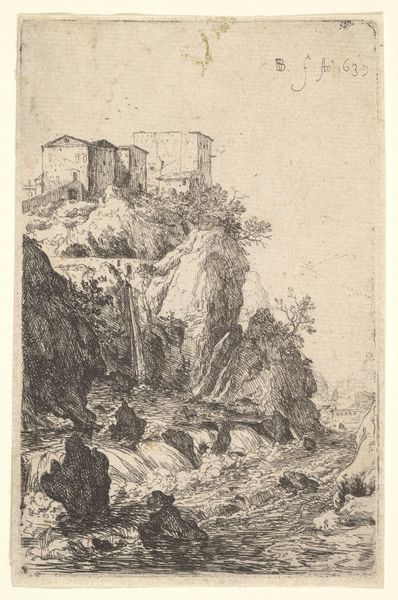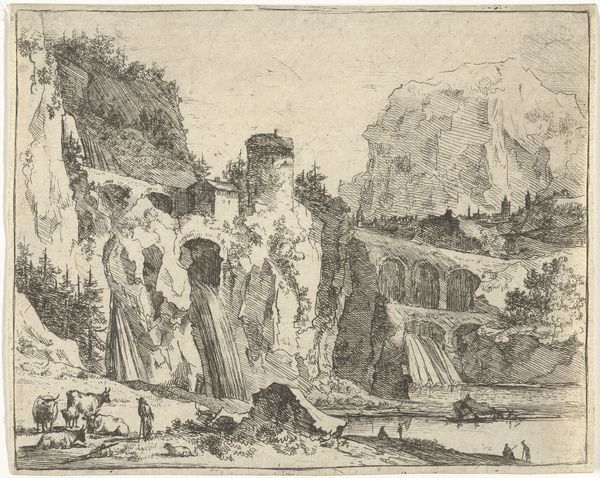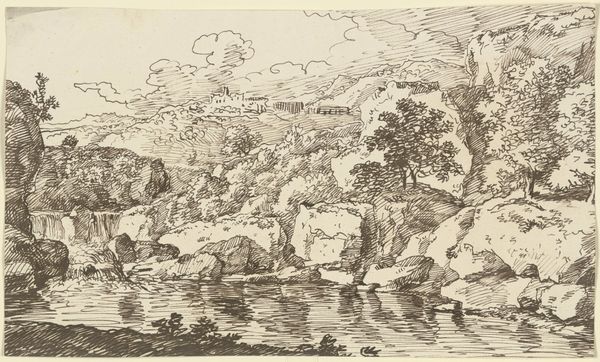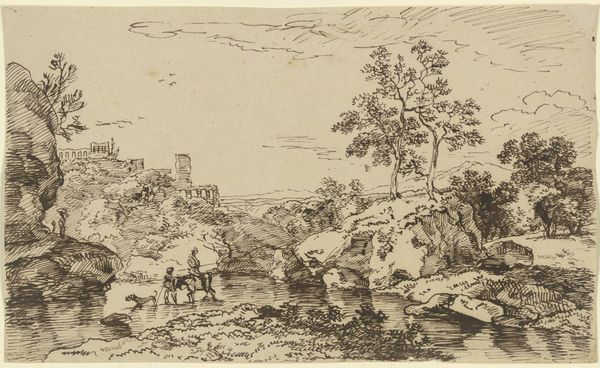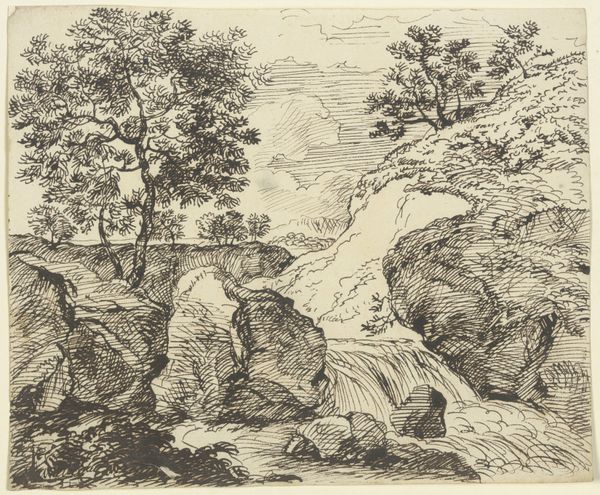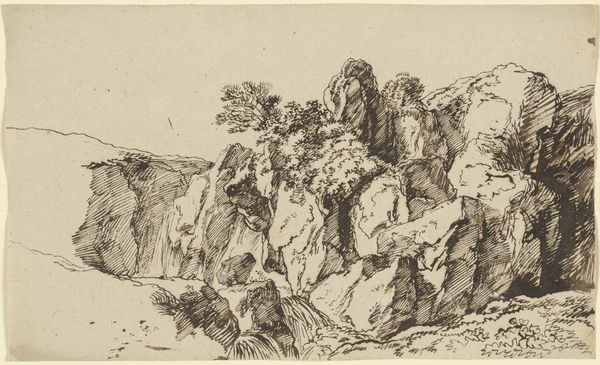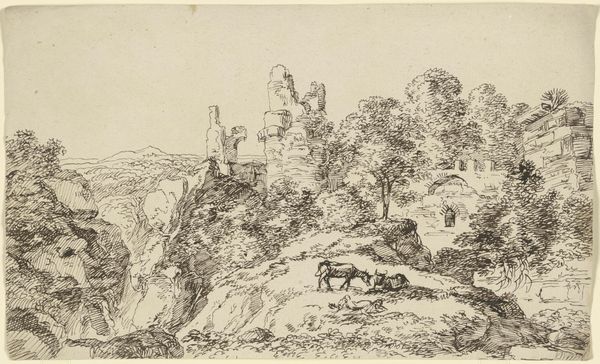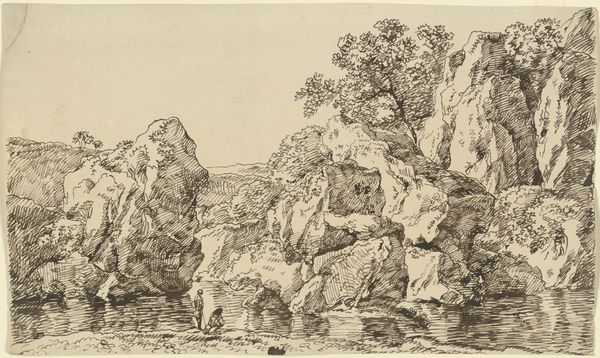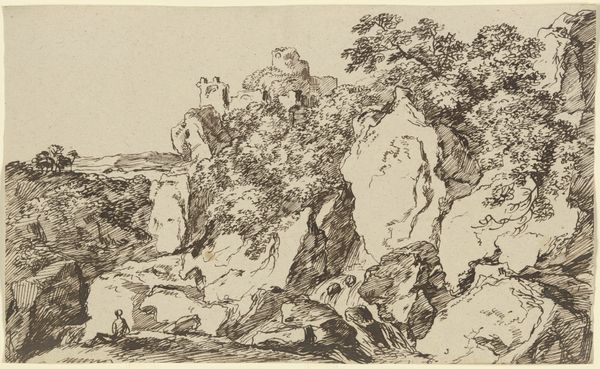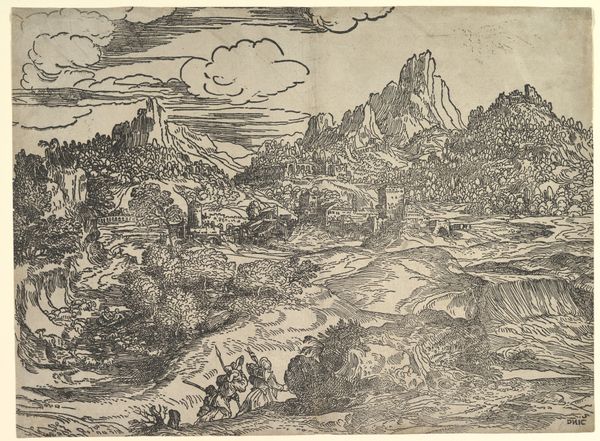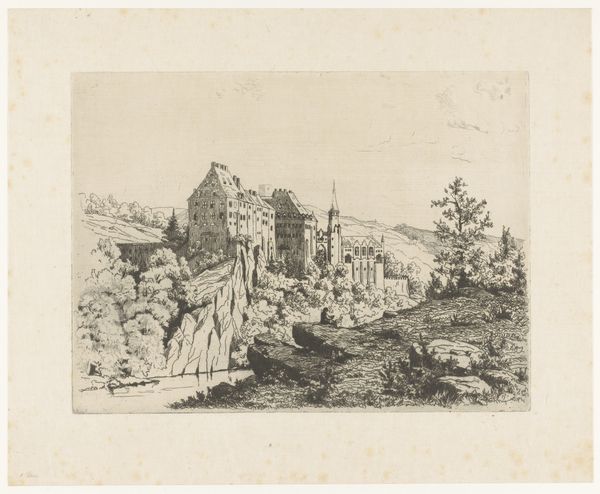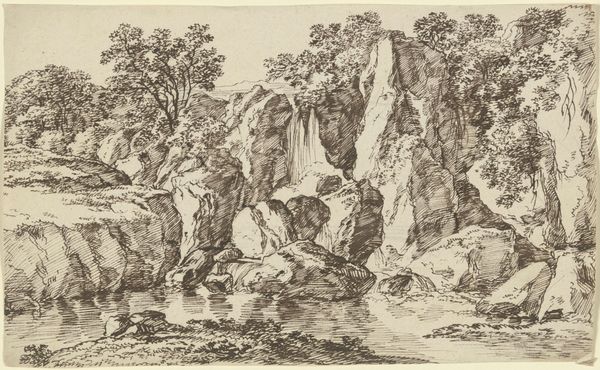
drawing, print, etching, ink
#
drawing
# print
#
etching
#
landscape
#
ink
#
15_18th-century
#
line
#
realism
Copyright: Public Domain
Franz Kobell etched this landscape with castle ruins in Germany during the late 18th or early 19th century. Kobell was among a generation of artists who turned away from depicting courtly life, and instead found artistic inspiration in nature. But what kind of nature? The rough and rocky terrain in this etching is hardly an untouched wilderness. The castle ruins evoke a romantic vision of the past, but also the history of aristocratic power and feudalism. Even the two figures in the foreground seem more like staffage – decorative elements – than individuals with their own stories. We can appreciate the etching's technical skill and its evocation of a specific mood, but it's important to remember that landscapes never appear to us neutrally. They always come loaded with cultural and political meanings that we, as viewers and as art historians, need to unpack. We might ask, what social class is most likely to have appreciated such imagery, and why? What is this image saying about the relationship between nature, culture, and history?
Comments
No comments
Be the first to comment and join the conversation on the ultimate creative platform.
